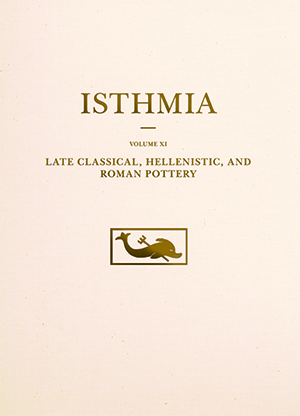Isthmia
Situated on the most direct route from the Peloponnese to central Greece and Attica, as well as from Corinth to the Saronic Gulf, the panhellenic sanctuary at Isthmia preserves evidence of cult practices from at least the 7th century B.C. A Doric Temple of Poseidon was built ca. 465 B.C. and then rebuilt after a fire around 75 years later. The site was the center of a cult to the local boy-hero Palaimon in the Roman period and continued to function as a sanctuary into at least the 3rd century A.D. Its abandoned buildings were used as a quarry to build a set of Late Roman fortifications to defend the Isthmus. This series publishes excavations by both the University of Chicago and Ohio State University.
I: Temple of Poseidon, by Oscar Broneer (1971)
II: Topography and Architecture, by Oscar Broneer (1973)
III: Terracotta Lamps, by Oscar Broneer (1977)
IV: Sculpture I: 1952-1967, by Mary C. Sturgeon (1987)
V: The Hexamilion and the Fortress, by Timothy E. Gregory (1993)
VI: Sculpture II: Marble Sculpture, 1967-1980, by Steven Lattimore (1996)
VII: The Metal Objects, 1952-1989, by Isabelle K. Raubitschek (1998)
VIII: The Late Bronze Age Settlement and Early Iron Age Sanctuary, by Catherine Morgan (1999)
IX: The Roman and Byzantine Graves and Human Remains, by Joseph L. Rife (2012)
X: Terracotta Lamps II: 1967-2004, by Birgitta Lindros Wohl (2017)
XI: Late Classical, Hellenistic, and Roman Pottery, by John W. Hayes and Kathleen Warner Slane (2022)

